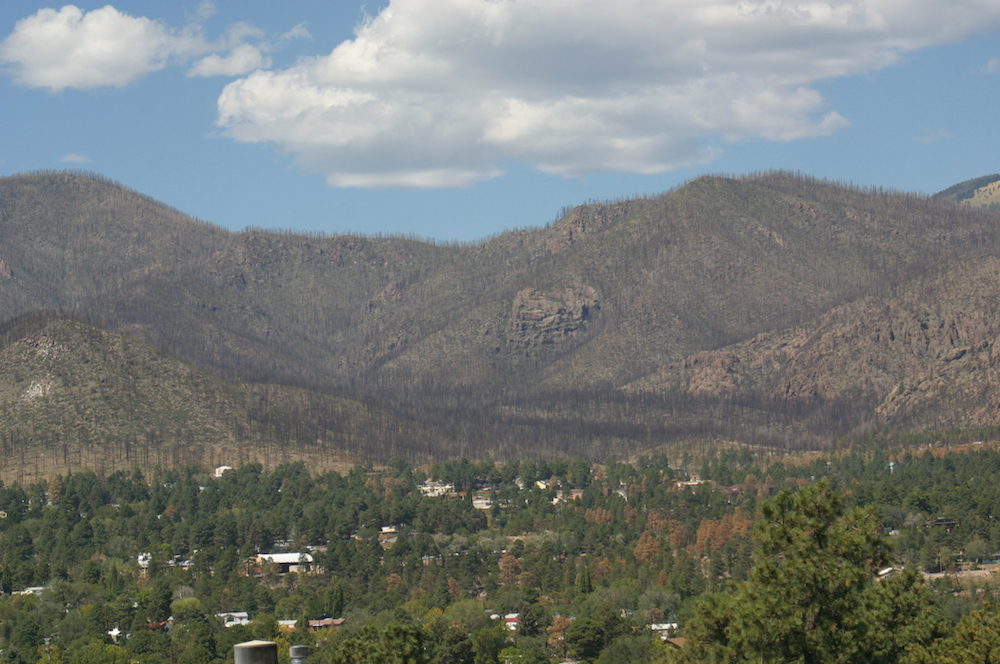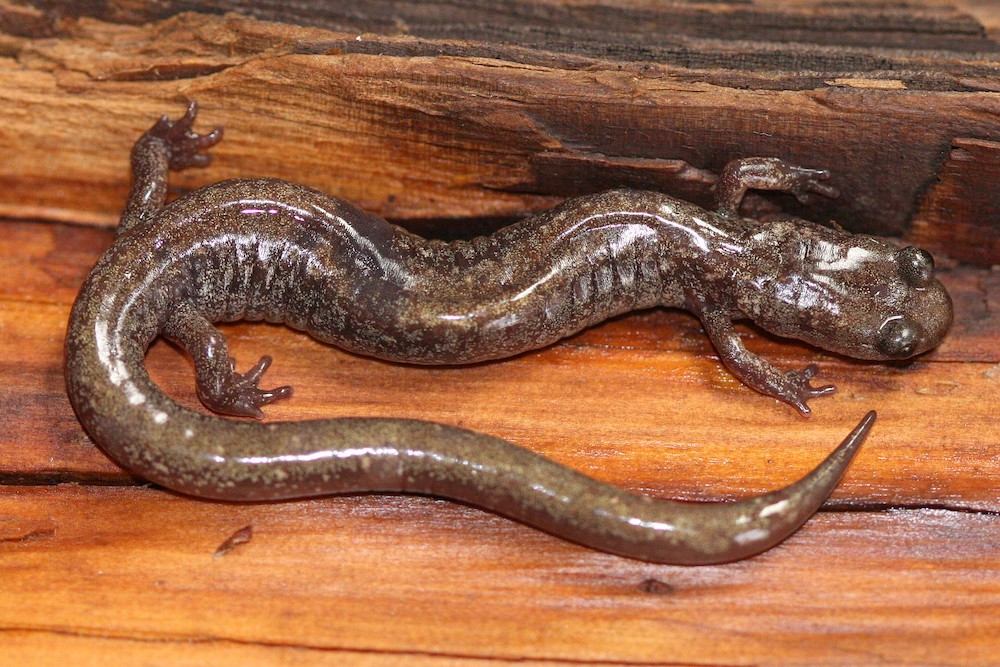
By Kathryn Laintz
Twenty years ago, the Cerro Grande Fire permanently altered Los Alamos. The devastation brought on by this fire is something so many people had to live through. I’m too young to have experienced life pre-Cerro Grande, so I can only imagine how hard it was for people to see the once densely forested Jemez completely decimated.
I did live through the Las Conchas fire in 2011. It was difficult for me to revisit the areas of wilderness I spent so much of my life exploring after they had been destroyed. I, like so many other New Mexicans, am incredibly fond of our ponderosa pine and aspen forests, and hope for their preservation. Unfortunately, these ecosystems are currently under threat.
Compared to places that have been ravaged by wildfire, any well-forested area in the Jemez might outwardly appear healthy. However, there are many factors acting against our forests that make them great vectors for megafires — a scientific term used to categorize forest fires that burn over 150,000 acres, which is an unnatural occurrence. Both the Cerro Grande and Las Conchas Fires fall into this category.
In order to fully explain why megafires like these happened, and understand why the forests of the Jemez are still at risk today, it is necessary to examine the historical environment of the area, and what the forest looked like before people first settled here.
The truly undisturbed environment of the Jemez dates back before the 1900s. Back then, forest fires in the Southwest were categorized as low-intensity, surface fires that mostly burned through grassy undergrowth. Frequent, but small and slow-burning fires were beneficial for healthy forest conditions by maintaining an open understory and maintaining large stands of coniferous trees.
The balanced forest structure between mature and old-growth trees, aspen, and openings with understory grasses, flowering plants, and shrubs prevented uncharacteristically high-intensity and severe fires. When severe fires did occur, they were a result of prolonged drought and lightning strikes during the summer months. These patterns are evidenced in fire scars in old-growth trees, however these fires were rare and typically burned in small patches.
Then, when railroads connected New Mexico to the rest of the country in the 1880s, people settled in the Jemez and human activity started to impact the environment. Activities such as overgrazing cattle, logging, and fire suppression all had detrimental effects on the ecosystem that have made it more susceptible to fires.
What proves to be the biggest threat to Jemez’s forest ecosystems is the same factor jeopardizing all at-risk ecosystems across the globe — climate change. On top of human activity dramatically shifting the natural state of the forest for over a century, climate change has brought increasing temperatures, drought, less available water (due to increasing demand for it), and extreme weather to the Jemez. All of which contribute to more severe fires that burn hotter and are harder to contain.
Today, the forest ecosystem of the Jemez looks a lot different than what it would be if left undisturbed by people and climate change. The natural forest structure of the Jemez should be groups of trees of different ages and sizes. Instead, there is a dense, continuous canopy of young and mid-age trees. Additionally, continual fire suppression has also allowed conifers to invade once naturally-occuring meadows, shrinking them down.
Climate change and human activity have shifted the forest structure in the Jemez, and the Cerro Grande and Las Conchas fires have dramatically damaged the environment. Not only have the trees and meadows been affected, but riparian and aquatic systems also have been degraded. Watershed areas without meadows or big trees allow more sediment to pass into stream banks and stream-road crossings, harming both plant and animal life. Streams have also become straighter and narrower due to shrinking meadows, reducing quality habitat for fish.
Beyond the watersheds and aquatic environments, the aftermath of megafires in the Jemez has led to habitat loss for important species like the Jemez Mountain salamander and the Mexican Spotted Owl. Non-native and invasive species introduced by humans have decreased biodiversity and weakened ecological communities in the Jemez environment. Examples of invasive plant species currently growing in this area include Pigweed, Ragweed, and False Tarragon.


On a more positive note, there are many ongoing efforts to restore the environment in the Jemez back to a healthy state and repair some of the areas that have been ravaged by megafires. Some examples of current ecological repair are:
- Prescribed burns to eliminate fire fuel in the underbrush and open up condensed forests. Learn more in PEEC’s post on water and the landscape, including a video on wildland fires from Bandelier’s Lead Fire Effects Monitor Hanna Davis, here.
- Placing boulders and logs, as well as planting native plants, to decrease erosion along watershed areas.
- Felling young trees in order to open up meadow habitats. This post from PEEC’s Siobhan Niklasson and the Valles Caldera’s Bob Parmenter explores some of the forest restoration happening in the Jemez.
- Using herbicides to help eliminate non-native plant species.
- Using machinery to create pools and channels in rivers to improve aquatic habitats.
Even still, the threat of climate change is on the global scale. I cannot help but continue to worry about the future of the forests surrounding Los Alamos, and if they will still be here for future generations to enjoy — as I have been so lucky to. My greatest hope is that New Mexicans will continue to support efforts to understand and help alleviate climate change, and that we continue to support agencies that are working to repair our forests so that they are less susceptible to megafires.
